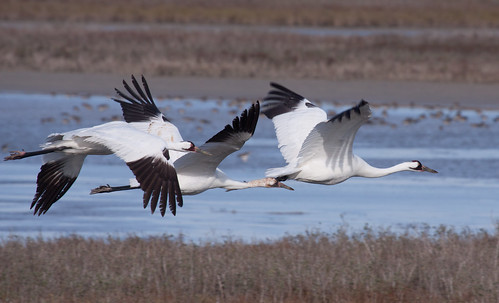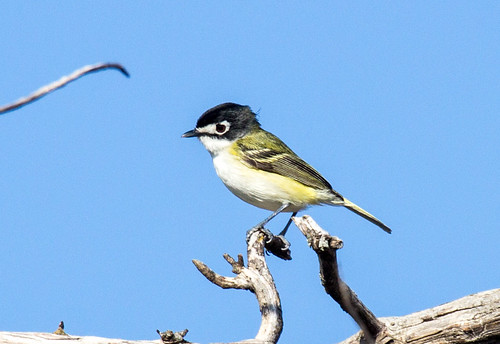One of the most frustrating elements for me of the toxic political climate today is how little facts seem to matter anymore in public discourse. It’s become a common belief that the Endangered Species Act hasn’t worked because, since its passage in 1973, only a handful of species have recovered enough to be de-listed. Just between 2011 and 2015, over 50 bills have been introduced trying to dismantle the Endangered Species Act, usually on the grounds that it has been a huge failure.
How can anyone argue this when Bald Eagles and Peregrine Falcons are so obviously doing well? They say the Endangered Species Act had nothing to do with these species’ recoveries—it was simply the banning of DDT. It takes a certain level of chutzpah for the same people who still decry banning DDT in the United States to seize upon that ban as the entire reason for the recovery of these species, but as entertainment and politics become increasingly intertwined, chutzpah seems the order of the day.
In reality, the Endangered Species Act sets forth provisions for researching the specific needs of each listed species and the causes for its decline, and requires the development of a specific plan of action created by researchers, state departments of natural resources, landowners, and other stakeholders that focuses on the specific needs of that species.
Each recovery plan includes benchmarks of success that set a minimum population level at which a species can safely be de-listed, along with an expected timeline for this to happen. The Senate unanimously voted in favor of the Act, Congress voted 390–12 in favor, and Richard Nixon signed it. The U.S. Supreme Court found that “the plain intent of Congress in enacting” the ESA “was to halt and reverse the trend toward species extinction, whatever the cost.”


In the case of Bald Eagles and Peregrine Falcons, the banning of DDT was certainly a primary cause of the endangerment in the first place. But both species had declined over most of their former range to critical levels—nesting Peregrine Falcons had been completely wiped out over the eastern United States. For either to recover, research into nesting requirements and sturdy protections of habitat and nesting areas were crucial; in the case of Peregrine Falcons, painstaking reintroduction projects after developing techniques for captive breeding, all funded by the Endangered Species Act, were also essential.
We humans are an impatient and shortsighted species. Back in 1973, everyone knew what a long, hard battle was needed to bring each species back from the brink, especially because virtually all endangered and threatened species are imperiled not by one easily fixable thing but by an assortment of causes, some very hard to address. But that law was passed 43 years ago—before most people living in the United States today were even born. Nowadays, it’s easy to pull a fast one on people, claiming the Endangered Species Act doesn’t work simply because it does take a long time to bring some species back.
Fortunately, a new report by the Center for Biological Diversity was released this week, documenting just how successful the Act has been with regard to birds, the group of animals most easy to accurately census. Fully 85 percent of the 120 bird species protected under the Endangered Species Act in the Continental United States increased or stabilized their population size since being protected, and the average population increase was 624 percent. For the most part, birds are recovering at the rate and magnitude intended by the Endangered Species Act’s congressional creators and administrative overseers.
And birds listed as endangered fared much better than unlisted birds, which on average have declined 24 percent since 1974. It’s impossible for a significant majority of Americans today to remember the ‘70s, when condors, eagles, osprey, and falcons were virtually gone; when the state bird of Louisiana, the Brown Pelican, had been entirely wiped out in Louisiana; when the extinctions of Black-capped Vireos, California Gnatcatchers, and Kirtland’s Warblers loomed in the foreseeable future. Today, those of us who were adults at the time and do clearly remember are ourselves disappearing. So in coming days I’ll focus on some of the dramatic successes of the Endangered Species Act.

Laura Erickson
Laura Erickson, 2014 recipient of the American Birding Association’s prestigious Roger Tory Peterson Award, has been a scientist, teacher, writer, wildlife rehabilitator, professional blogger, public speaker, photographer, American Robin and Whooping Crane Expert for the popular Journey North educational website, and Science Editor at the Cornell Lab of Ornithology. She’s written eight books about birds, including the best-selling Into the Nest: Intimate Views of the Courting, Parenting, and Family Lives of Familiar Birds (co-authored by photographer Marie Read); the National Outdoor Book Award winning Sharing the Wonder of Birds with Kids; 101 Ways to Help Birds; The Bird Watching Answer Book for the Cornell Lab of Ornithology; and the National Geographic Pocket Guide to Birds of North America. She’s currently a columnist and contributing editor for BirdWatching magazine, and is writing a field guide to the birds of Minnesota for the American Birding Association. Since 1986 she has been producing the long-running “For the Birds” radio program for many public radio stations; the program is podcast on iTunes. She lives in Duluth, Minnesota, with her husband, mother-in-law, licensed education Eastern Screech-Owl Archimedes, two indoor cats, and her little birding dog Pip.






Leave a Reply